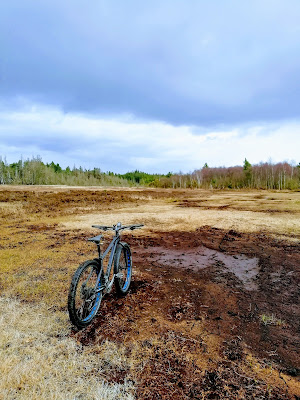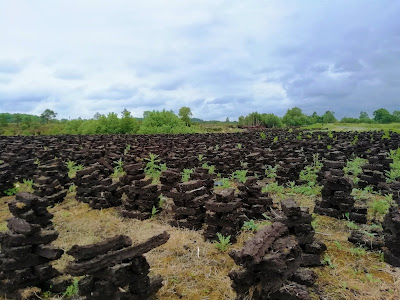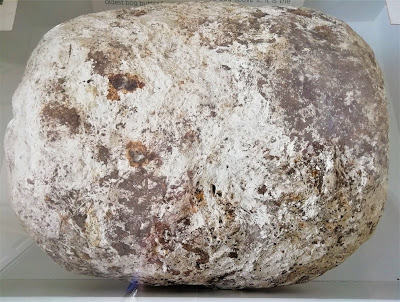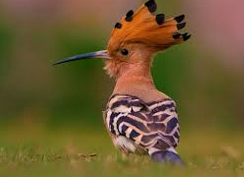There are two types of bog in Ireland, a raised bog and a blanket bog.
Blanket bog is generally found in mountainous upland areas whereas raised bogs are mostly found in lowland areas with the biggest concentration of raised bog areas found in the Irish midlands.
Raised bogs develop over a long time from fens, an intermediate stage of raised bog formation. Bogs are 95% water and the chief vegatation in them is Sphagnum moss.
Without going into a post on the details of either I've just posted a few photographs from the bog nearby.
Turf harvested by hand has to be "footed" to dry out before it is suitable for use and burning.
Milled turf (Peat) would be hauled on narrow guage railways direct from the bogs to the energy generating power plants for burning.
Turf harvested by hand has to be "footed" to dry out before it is suitable for use and burning.
Milled turf (Peat) would be hauled on narrow guage railways direct from the bogs to the energy generating power plants for burning.
Because of restrictions on movement and limitations of going no further than 2 Kms from home during the Corona virus pandemic any cycling recently has been limited to me heading into the nearby bog.
These bogs have historically been harvested by locals for fuel to be used as home heating as well as harvested on a larger scale by the state (Bord na Móna) as a fuel source for turf burning power stations.
Bogs are "anaerobic" which means that they have very little oxygen in them. Because oxygen accelerates decomposition this means that bogs often preserve things well and stifle decomposition.
Cashel man is an example of a Bronze Age "Bog Body" which is on display at the National museum and is a well preserved body which was found in a local Laois bog.
"Bog Butter" is another item sometimes discovered in a well preserved state and I've included a picture of a 30 Kg lump of 1000 year old "Bog Butter" which is on display in Roscrea.
"Bog Butter" is another item sometimes discovered in a well preserved state and I've included a picture of a 30 Kg lump of 1000 year old "Bog Butter" which is on display in Roscrea.
The rehabilitation of Ireland's raised bogs will take many decades but should eventually return a valuable ecological asset to nature.
With environmental and ecological concerns coming to the forefront the days of the rural turf cutter are fast coming to an end.
The image conjures up a very happy and comforting picture of times past but there's no going back and no matter how much we might object the reality is that there is no place for an unsustainable and environmentally destructive process any more.
Bogs are an important ecological niche and a huge variety of specialised plants exist and depend on them as does a large variety of "Scrub." The "Scrub" encourages a wide number of small bird species.
The most unusual bird I've been fortunate to see in an Irish bog is an African Hoopoe, which I presume was somewhat "off course."
I've fond memories of meeting turf cutters decades ago as I rambled here and there but time moves on and so too must process's......
The image conjures up a very happy and comforting picture of times past but there's no going back and no matter how much we might object the reality is that there is no place for an unsustainable and environmentally destructive process any more.
Bogs are an important ecological niche and a huge variety of specialised plants exist and depend on them as does a large variety of "Scrub." The "Scrub" encourages a wide number of small bird species.
The most unusual bird I've been fortunate to see in an Irish bog is an African Hoopoe, which I presume was somewhat "off course."
I've fond memories of meeting turf cutters decades ago as I rambled here and there but time moves on and so too must process's......









